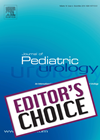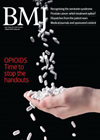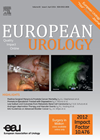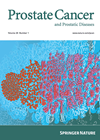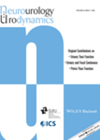
Journal Reviews archive for July 2014
Button vesicostomy
Poor bladder emptying often requires clean intermittent catheterisation (CIC). In significant numbers of children CIC is not possible for a variety of reasons and an alternative is needed. This paper reviews a single centre’s usage of the vesicostomy button over...
Comparative effectiveness of radical prostatectomy and radiotherapy in prostate cancer
Despite prostate cancer being one of the most commonly diagnosed cancers worldwide, there remains a need for high-quality evidence regarding the optimal treatment choice. In this large population-based cohort study, using the PCBaSe Sweden dataset, Sooriakumaran and colleagues identified patients...
Intermittent vs. continuous hormonal therapy for metastatic prostate cancer
Continuous androgen deprivation therapy (cADT) is the standard management for metastatic prostate cancer (mPCa). Intermittent androgen deprivation therapy (iADT) is sought to have better quality of life (QoL) and adverse events profile during off-treatment period. This multicentre European randomised study...
Antibiotics and flexible cystoscopy
This study is from Memorial Sloan-Kettering Hospital in New York, USA. Thousands of flexible cystoscopies are performed every day worldwide. Do they need antibiotic cover? Flexible cystoscopy may cause urinary tract infection (UTI) in less than 10% of cases. Asymptomatic...
The EP2 receptor – a novel target for prostate cancer?
This basic science paper sets out to evaluate the effects that celecoxib, a selective cyclo-oxygenase-2 (COX-2) inhibitor, have on prostate cancer cell lines and evaluated the mechanisms behind these effects. COX-2 induces the production of prostaglandins, which promote cell proliferation...
New therapy for overactive bladder
Overactive bladder (OAB) is a complex symptom that can adversely affect quality of life. So far pharmacotherapy has focused on anti-cholinergic drugs. Recently, beta-adrenoreceptors have been identified as having an effect on the detrusor muscle and urothelium. Beta-3 is the...

